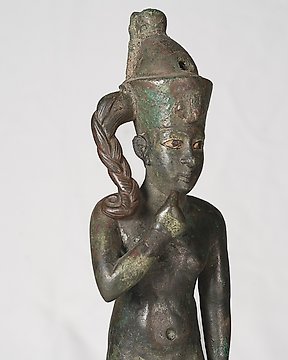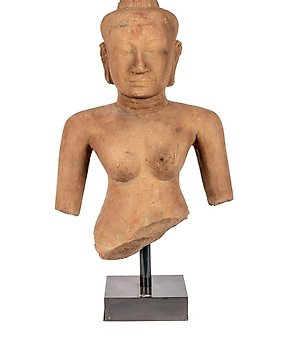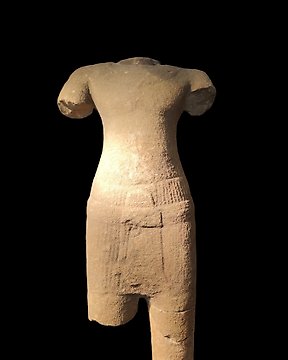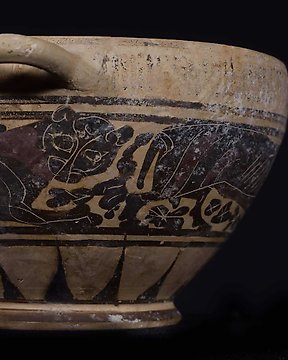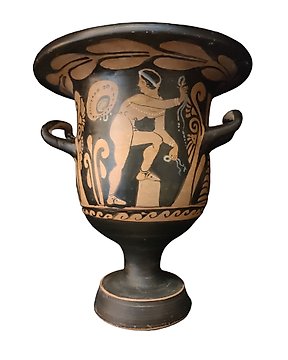
Altgriechisch, Magna Graecia Apulischen Glockenkrater mit spanischer Exportlizenz
Catawiki nutzt immer die neuesten Technologien. Sie verwenden derzeit einen veralteten Browser. Aktualisieren Sie bitte Ihren Browser, damit Sie immer alle neuen Funktionen optimal nutzen können.
Über die folgenden Buttons können Sie Ihre Cookie-Einstellungen auswählen. Sie können Ihre bevorzugten Einstellungen ändern und Ihre Zustimmung jederzeit widerrufen. Eine detaillierte Beschreibung aller Arten von Cookies, die wir und unsere Partner verwenden, finden Sie in unserer Cookie-Erklärung.
Nr. 84624149

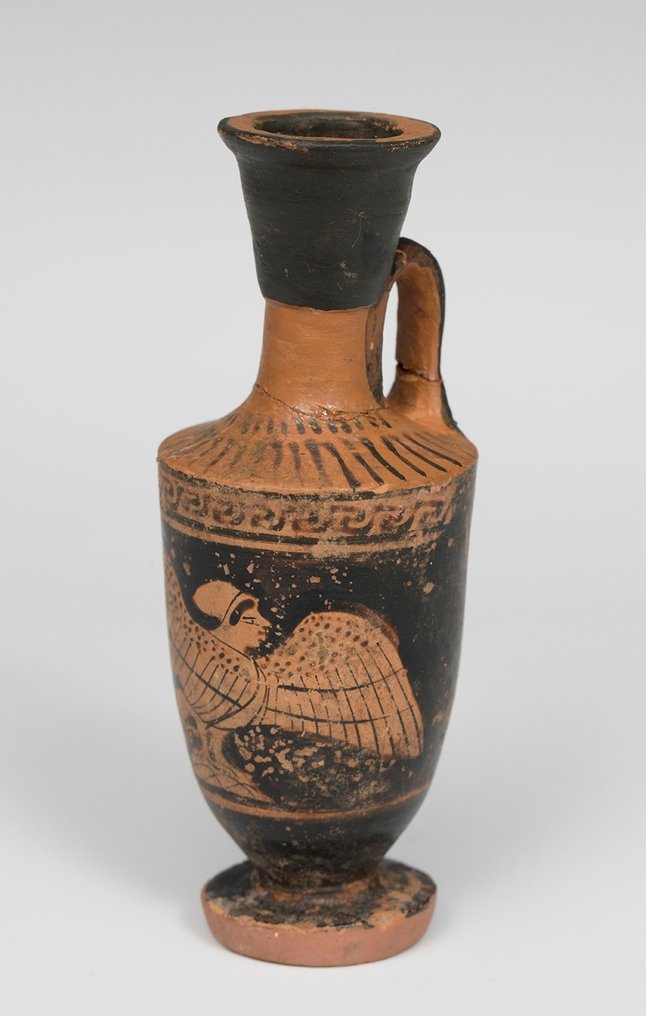

A superb and rare attic red-figure lekythos decorated with a siren looking to its left, standing on a rock with the wings raised. Decorated on the neck with rays and meander on the shoulder.
In Greek mythology, sirens, human-headed birds known for their beautiful voices, were offen associated with the afterlife, and they appear frequently in Classical Greek funerary art. In addition to their mournful depictions on grave stelai, sirens were also an appropriate decoration for a lekythos, a type of vase often connected with death and burial ritual. This hybrid character combining a bird and a woman has Assyrian-Babylonian origin
Sirens are beings that one should flee from, in spite of their attractive appearance. This ambivalent archetype based on patriarchal assumptions originates from the notion of women as fascinating albeit dangerous objects. In Greek culture, the Sirens lived on a gloomy island and used their songs to entice sailors, who ran aground on their shores. Apollonius of Rhodes describes them for the first time at the beginning of the 3rd century B.C., as possessing the head of a woman and the body of a bird, consistent with their musical prowess. It wasn´t until the Middle Ages that their body shifted into that of a fish.
As beautiful and eternal provocateurs of men, they personified temptation and lust among other things and enjoyed a long life in popular lore under different names and forms: naiads, Lamias or Xanas were also precursors to the femme fatale of Romantic period iconography, present to this day.
Dimensions: 11,00 cm.
Condition: Some surface wear. Restored on fracture line on the neck and handle, Small restoration on foot. Otherwise good condition.
Similar examples:
- Metropolitan Museum. New York. Accession Number: 41.162.123
Provenance: M.F. Private Collection, Madrid. Acquired to antiquities dealer in 1999.
Notes:
- The piece includes authenticity certificate. The piece includes
Spanish Export License ( Passport for European Union).
- If the piece goes outside the European Union a new export license will
be requested by us, This process can take between 2 and 4 weeks.
According to Spanish legislation, items sent outside the European Union
are subject to export taxes and will be added to the invoice, at the
buyer's expense. These export fees are fixed on the final auction price
and the tax rate is not applied directly on the total value of the item
to be exported, but rather the different percentages by sections are
applied to it:
- Up to 6,000 euros: 5%./ From 6.001 to 60.000 euros: 10%.
- Shipped with Insurance.
A superb and rare attic red-figure lekythos decorated with a siren looking to its left, standing on a rock with the wings raised. Decorated on the neck with rays and meander on the shoulder.
In Greek mythology, sirens, human-headed birds known for their beautiful voices, were offen associated with the afterlife, and they appear frequently in Classical Greek funerary art. In addition to their mournful depictions on grave stelai, sirens were also an appropriate decoration for a lekythos, a type of vase often connected with death and burial ritual. This hybrid character combining a bird and a woman has Assyrian-Babylonian origin
Sirens are beings that one should flee from, in spite of their attractive appearance. This ambivalent archetype based on patriarchal assumptions originates from the notion of women as fascinating albeit dangerous objects. In Greek culture, the Sirens lived on a gloomy island and used their songs to entice sailors, who ran aground on their shores. Apollonius of Rhodes describes them for the first time at the beginning of the 3rd century B.C., as possessing the head of a woman and the body of a bird, consistent with their musical prowess. It wasn´t until the Middle Ages that their body shifted into that of a fish.
As beautiful and eternal provocateurs of men, they personified temptation and lust among other things and enjoyed a long life in popular lore under different names and forms: naiads, Lamias or Xanas were also precursors to the femme fatale of Romantic period iconography, present to this day.
Dimensions: 11,00 cm.
Condition: Some surface wear. Restored on fracture line on the neck and handle, Small restoration on foot. Otherwise good condition.
Similar examples:
- Metropolitan Museum. New York. Accession Number: 41.162.123
Provenance: M.F. Private Collection, Madrid. Acquired to antiquities dealer in 1999.
Notes:
- The piece includes authenticity certificate. The piece includes
Spanish Export License ( Passport for European Union).
- If the piece goes outside the European Union a new export license will
be requested by us, This process can take between 2 and 4 weeks.
According to Spanish legislation, items sent outside the European Union
are subject to export taxes and will be added to the invoice, at the
buyer's expense. These export fees are fixed on the final auction price
and the tax rate is not applied directly on the total value of the item
to be exported, but rather the different percentages by sections are
applied to it:
- Up to 6,000 euros: 5%./ From 6.001 to 60.000 euros: 10%.
- Shipped with Insurance.



